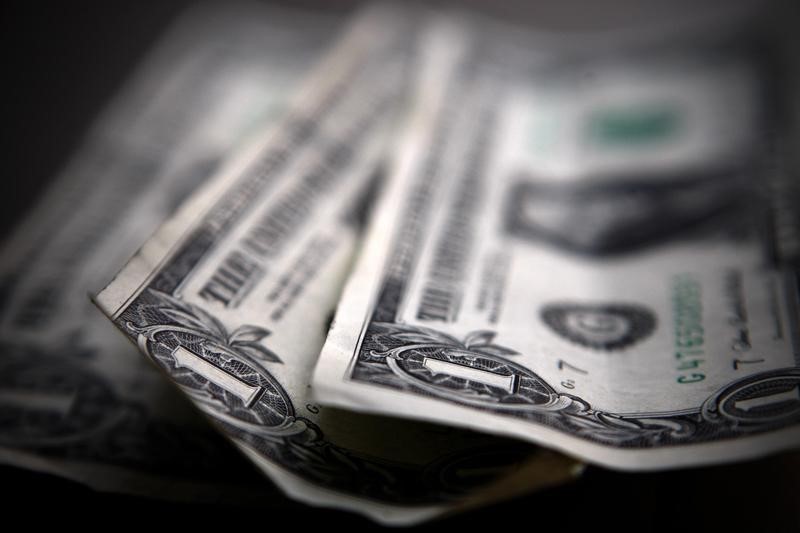By Gina Lee
Investing.com – The dollar was down on Thursday morning in Asia, remaining around a two-week low. The U.S. currency was weighed down by the latest insistence from U.S. Federal Reserve Chairman Jerome Powell that interest rate hikes are not forthcoming.
The U.S. Dollar Index that tracks the greenback against a basket of other currencies edged down 0.17% to 92.157 by 1:04 AM ET (5:04 AM GMT), after recording its third consecutive fall during the previous session.
The USD/JPY pair inched down 0.10% to 109.78.
The AUD/USD pair inched up 0.03% to 0.7378, with an extended lockdown in Sydney set to put a dent on both the Australian economic recovery and the risker Australian dollar. The NZD/USD pair was up 0.32% to 0.6969, with New Zealand’s ANZ business confidence falling to -3.8 in July.
The USD/CNY pair was down 0.26% to 6.4738. The yuan clawed back most of its losses from Tuesday, but traded slightly on the back foot ahead of the onshore markets’ open on Thursday.
Efforts to calm the market turbulence over a crackdown on sectors such as education raised investors’ confidence, with China Securities Regulatory Commission (CSRC) Vice Chairman Fang Xingha reportedly calling executives at major investment banks on Wednesday.
The GBP/USD pair was up 0.21% to 1.3927.
Powell’s comments came as the Fed handed down its latest policy decision on Wednesday, where he said that interest rate hikes are "a ways away" and that the job market still had "some ground to cover” before the central bank begins to taper its assets.
Although the dollar rose following the Fed’s decision, it retreated to a two-week low of $1.1849 against the euro after Powell's comments. The retreat indicated that the greenback could be taking a breather from its month-long rise, with the euro now above its 20-day moving average.
"The reaction was to the Powell presser, which was seen as dovish... and improving risk sentiment should be associated with a weaker dollar " National Australia Bank (OTC:NABZY) head of FX strategy Ray Attrill told Reuters.
He also noted the rebound in U.S.-listed China tech names and recent gains in re-opening exposed firms.
The pound has been a big mover during the past week, thanks to initial positive signs from England’s lift of most COVID-19 curbs earlier in the month. Rolling averages of daily U.K. COVID-19 cases are headed towards a downward trend, even as the number of COVID-19 cases in the U.K. continues to rise. However, experts and Prime Minister Boris Johnson warned that it is currently too early to draw any conclusions.
"At the moment, the U.K.’s COVID-19 position is pretty good and I do think that's had an impact," said NAB's Attrill.
Investors now await German labor and inflation data to be released later in the day, including the unemployment change and rate for July as well as the consumer price index. The U.S will also release its second-quarter GDP later in the day.
